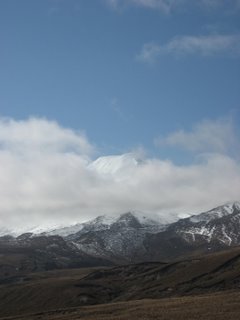The Orthopedic Oilers
 Two weeks have past since my return from NZ, phew time's flying!
Two weeks have past since my return from NZ, phew time's flying!My large animal orthopedic surgery rotation finishes today and tomorrow, I begin large animal soft tissue surgery. This past two weeks has been a whirlwind of cases and to-do lists. There were three students on my rotation, which definitely lightened the individual case load. We all worked together well and even went out for dinner last night to celebrate the completion of our rotation – it’s good to have comradery.
In total, I was the primary student clinicians on 15 cases and had 10 in-hospital patients. I saw a variety of cases including: lameness, fracture repairs, throat surgeries, lacerations, etc... The majority of the patients on ortho are horses, but I was fortunate to have 1 cow with a laceration, that went to surgery and a reindeer with a lame forelimb (yes, a reindeer =-)
Now it’s Sunday, a time to catch up on laundry, dishes, bills and the like.
Time to visit friends neglected and gear-up for another 2-weeks.


















































